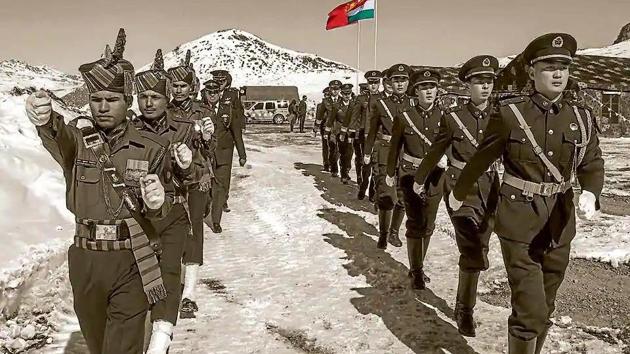How the Galwan Valley tragedy can transform Himalayan geopolitics
Ladakh will be key in the new Great Game. Reimagine its external and internal orientation
The brutal clash between Indian and Chinese soldiers on the night of June 15 has exposed the People’s Liberation Army (PLA)’s well-planned design of stealthily wresting the entire Galwan Valley from India’s control. It also carries a set of underlying messages and possibilities.

First, immediately after the incident, PLA’s Western Theatre Command (WTC) issued a statement on June 16, claiming China’s territorial “sovereignty” over the entire Galwan Valley. That was followed by a June 17 statement from Chinese foreign ministry spokesperson, Zhao Lijian, that echoed, in verbatim, WTC’s line claiming China’s sovereignty over the Galwan Valley area.
Second, it appears to have been triggered by local factors at a micro-level, with, at the most, instructions from WTC headquarters. Clearly, it is a case of a disengagement process not being handled properly at the local level and things going out of control. There have been other violent hand-to-hand clashes in this area since the 2017 Doklam standoff. It turned more violent this time with PLA using more lethal weapons, stones, boulders, rocks wrapped with barbed wire and wooden logs studded with nails.
A third, inter-related, point is that the top PLA officials of WTC seem to enjoy more autonomy than other Chinese military theatres. In this case, the Chinese government only seems to have endorsed WTC’s line, which has a specific mandate or a direct and wider strategic direction from Beijing to alter the ground situation in consonance with China’s national vision for western provinces ie Xinjiang and Tibet. It also has a larger focus agenda with regards to securing Chinese interests, including safeguarding China’s ambitious Belt and Road Initiative (BRI)-related projects moving just north of the Karakoram Range. PLA views India’s building of strategic roads in Ladakh as potentially causing disruption to the security of the BRI/Chinese Pakistan Economic Corridor (CPEC).
Fourth, the incident can either spark greater escalation or actually, counter-intuitively, lead to de-escalation. The Indian Army has lost 20 personnel, including a commanding officer in the vicious attack. This is the biggest military clash in over five decades and the risk of the border standoff escalating into a full-scale confrontation is clearly present. However, unconfirmed reports suggest the Chinese side too suffered “proportionate casualties”, with at least 43 PLA personnel either dead or injured in the clash. If this is the case, then the balance of tragedies is established, and opens up the scope for further de-escalation to continue as agreed upon during military talks held on June 6.
What happens now also depends on the political will of the two countries. If the political relationship between India and China is not smooth, the Chinese party leadership may find it hard to control PLA, which is generally seen as more hardline on India. At the same time, the situation can still be brought under control by political and diplomatic interventions at a higher level. The clash has finally compelled both sides to open up talks at the foreign minister-level.
However, if China refuses to revert to a pre-standoff status quo position, India may be forced to evict PLA from the Indian side though a military intervention.
Whether there is escalation or not is also closely related to how the two sides tell the story of the incident to their people. The Chinese side is not giving the exact figure of casualties. We do not know if they are embarrassed or whether they want to hide the figures from their own people and underplay the incident to prevent escalation.
Where does this leave New Delhi?
India must respond to China’s move, not just through military means but through a forward-looking strategic, economic and connectivity vision matching China’s BRI project. It must think about reconnecting and resuming old trade links. Ladakh is a geostrategic axis or a pivot point for India to reach out to central Asia, Europe and Russia. The Dorbo-Shayok-DBO road should be called the Ladakh economic corridor. It should be India’s approach to go beyond the Himalayas. Otherwise, India is destined to remain defensive in posture.
This, however, is contingent on India reworking the governance priorities in Ladakh. It is the locals who have the best understanding of the border. The region has already remained neglected for a long time due to Article 370 and 35A.
The way forward must have several components. First, the Ladakh administration should distribute the entire stretch of vacant land in eastern Ladakh (from Chumur to Karakoram) among the population of the Leh district for agriculture, horticulture and other economic activities.
Two, the government must expedite infrastructure airport/road network expansion in eastern Ladakh. The Indian Air Force must reactivate the Fukche/Loma airport for both civilian and military use. Attempts should be made to reopen and refurbish the old Chuchul airport base.
Three, authorities must re-populate the area with legal ownership to citizens and not leave the borderland vacant. The government must provide incentives for Changpa nomadic farmers presently settled in Leh (Kharnag-Ling settlement) to return to the borderland areas and encourage them to reactivate their nomadic Rebo herding skills. Security forces should be directed not to prevent their movement along the border areas.
Four, large-scale forestation and large-scale grass-sowing activities through aerial seeding and use of drip-irrigation technology must be undertaken. Five, NITI Aayog should prepare a defence-development plan for area development. And six, the Indian Army should revisit the idea of legalising the existing illegal border trade at specific places such as at Dhumtsele and Demchok.
Galwan has changed geopolitics in the Himalayas. India must step up.



